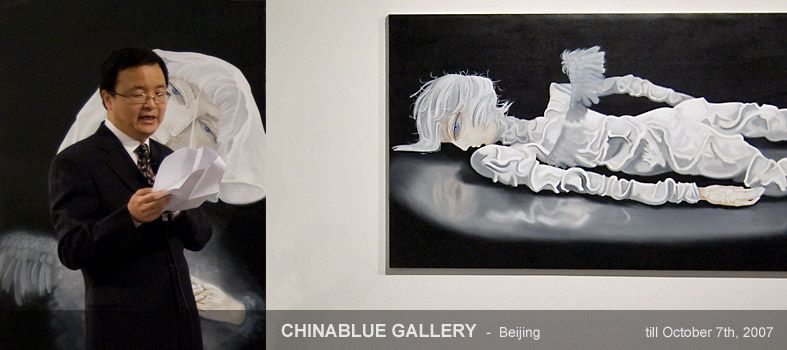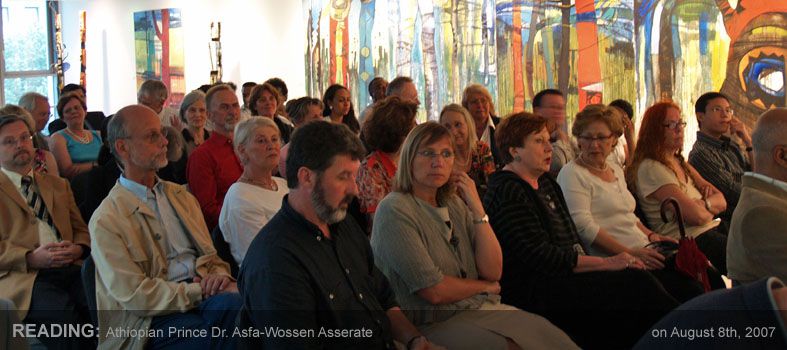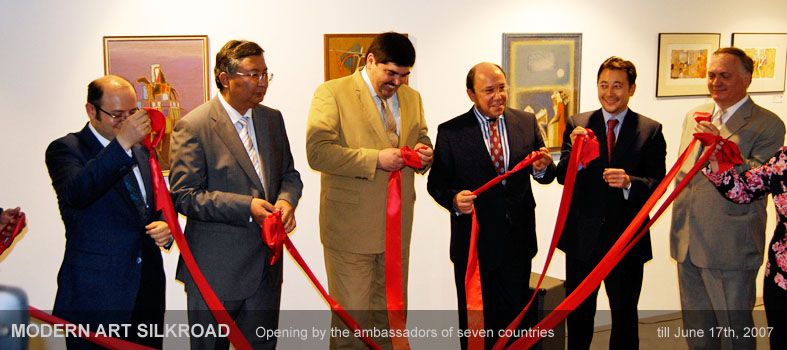THREE ASPECTS OF THE TUNESIAN CULTURE
till 15th Dec. 2007
An exhibition under the auspices of the Minister of Culture of the Republic of Tunisia, Mr. Mohamed El Aziz Ben Achour (ministre de la culture et de la sauvegarde du patrimoine),
Curator:
Madame el Katib Ben Romdhane - Director Dar el founoun / la maison des arts- responsible for the École de Tunis
Monsieur Mustapha Khanoussi - Director Institut National du Patrimoine - responsible for Simmithus
Madame Samia Kamarti - Director Bibliotheque Nationale - responsible for Ibn Khaldun

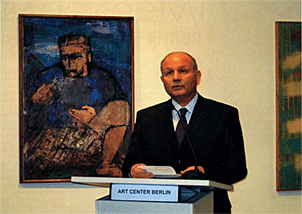
f.l.t.r. Thomas Tyllack (GM Art Center Berlin), Werner Wnendt (Foreign Office), Ambassador Moncef Ben Abdallah Media: Arab Forum >>
1-Contemporary Art: L'ÉCOLE DE TUNIS / The School of Tunis
In 1949 the "L'école de Tunis" was founded to point out the Tunisian within the art of the country. Furthermore it was supposed to restrict the local art forms from other schools, such as the "École de Paris". French, as well as Tunisian artists did join the group. United they did search for the "true Tunisian painting". After the independence of Tunisia in 1956 the movement became part of the national identification process and served the young state, too. Some of the artists of the "École de Tunis" became internationally well known.
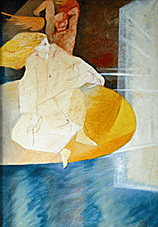
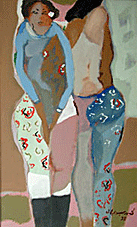
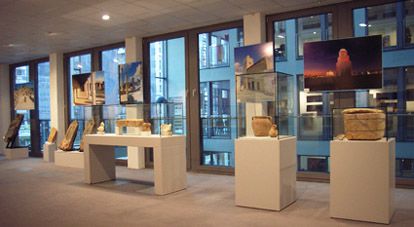
2- Archaeology: Archaeological artefacts from the excavation site of SIMMITHUS (Chimtou)
Simitthus is an archaeological excavation site at the Northwest of Tunisia. The site sizes more than 100 ha. Here stood the antique city called SIMITTHUS, a roman colony during the time of Augustus (who ruled from 27 BC to 14 AD) with the official name "Colonia Iulia Augusta Numidica Simitthensium". The region was famous for its yellow marble, which at the antique times was called "Marmor Numidicum", at the renaissance it was known as "Giallo Antico". Hardly visited by European travellers, the site was mainly ignored till the end of the 19th and the beginning of the 20th century.
The few excavations were located at the theatre, the necropolis and a small area which had been identified as the market place of the city. Later the site was surprisingly completely forgotten for several decades, till the end of the sixties. Then a German-Tunisian archaeological cooperation group started working at Simitthus and did successfully excavate the area till 1997.
3- Social sciences: Ibn Khaldun

